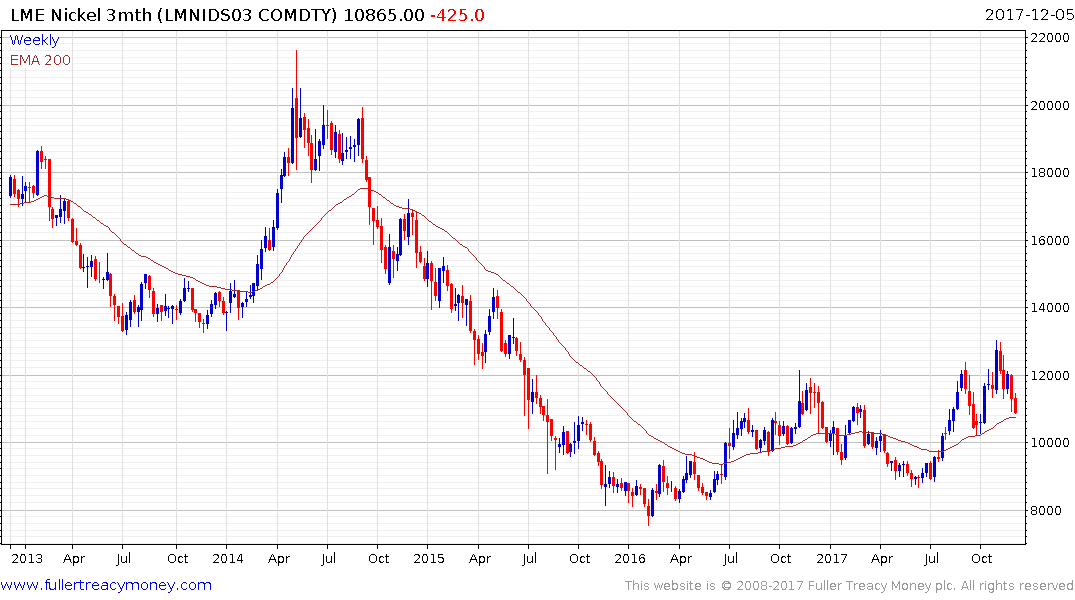The Future of Nickel: A class act
Thanks to a subscriber for this report from McKinsey which may be of interest to subscribers. Here is a section:
Currently, class 1 nickel supply suitable for battery production represents approximately half of global supply of 2.1 million metric tons (Mt) – although only 350 metric kilotons (Kt) is available to be processed into powder and briquettes that could be used to produce nickel sulphate (in 2017 approximately 65 Kt to 75 Kt of nickel content will be used to make nickel sulphate). With annual EV production expected to reach 31 million vehicles by 2025, demand for high-purity class 1 nickel may increase significantly from 33 Kt in 2017 to 570 Kt in 2025. This comes on top of class 1 demand from traditional end-use segments i.e., plating, foundry and super-alloys. A shortfall in class 1 nickel production seems increasingly likely as current low nickel prices do not support class 1 nickel capacity expansions and alternative strategies e.g., shifting existing production from nickel cathode to nickel sulfate or refining nickel intermediates, seem unlikely to provide long term solutions. As a result, not only will nickel prices likely need to move towards incentive pricing but the future pricing mechanism is likely to reflect two distinct nickel products: class 1 and class 2.
How rapidly a potential shortfall in class 1 nickel supply emerges will depend on several factors, including the speed of EV adoption, the choice of battery technology, mining companies’ willingness to restart class 1 production projects after a decade of low nickel prices, the potential for technology breakthroughs in cost-competitive refining of non-ferrous class 2 products and the potential for increased class 1 nickel recycling. Whatever scenarios emerge, value chain participants need to weigh the strategic moves to enable them to benefit from future nickel industry dynamics.
Here is a link to the full report.
The LME signaled a couple of months ago that it is assessing whether to split the nickel contract in two. The decision will hinge on whether they believe battery demand will in fact ramp higher as many of us expect. The demands from the emerging battery sector are much more stringent in terms of delivery specifications than are currently the norm for LME warehouses so there is a compelling argument for the creation of a new contract.
The mining industry recognizes the requirement for nickel sulfate but is unwilling to raise the capital required to increase supply with prices this low. Nickel is still dominated by stainless steel demand while batteries represent a medium-term driver. That suggests there is a growing supply inelasticity meets rising demand story for nickel sulfate but the catalyst for a return to demand dominance may prove to be the splitting of the nickel contract.

Nickel prices are now back testing the region of the trend mean and will need to hold the $10,750 area if potential for higher to lateral ranging is to be given the benefit of the doubt.


